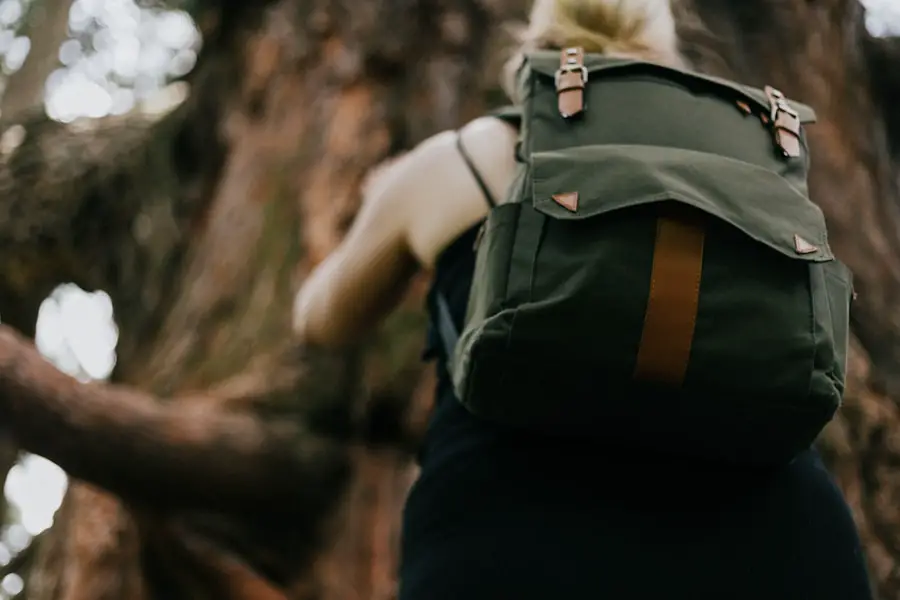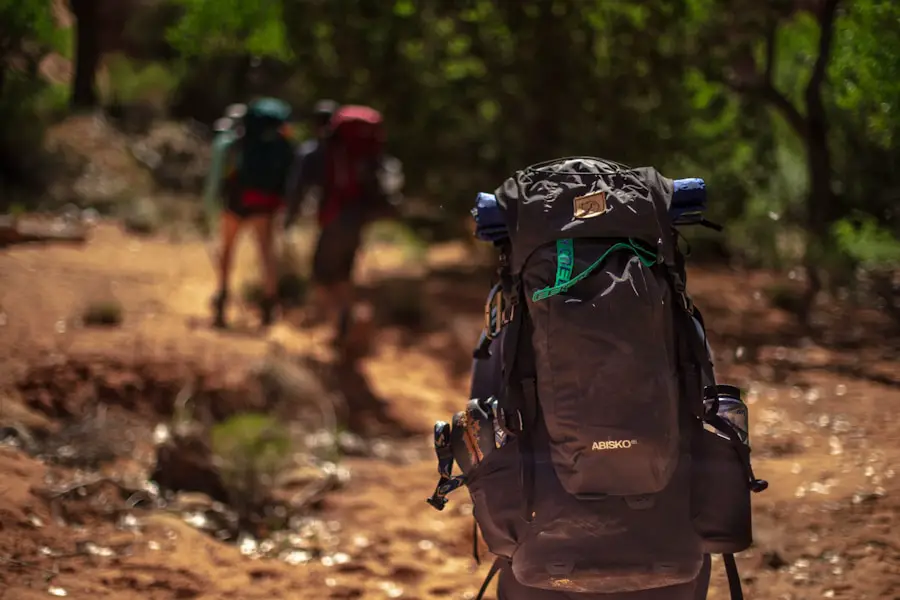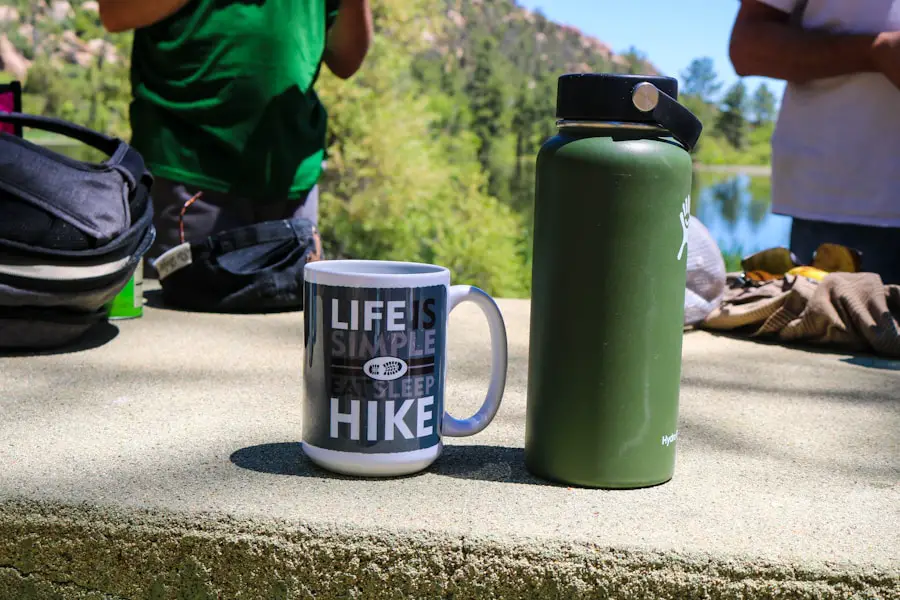When embarking on any outdoor adventure, the choice of footwear is paramount. The right shoes or boots can make the difference between a comfortable trek and a painful ordeal. Hiking boots, for instance, are designed to provide support and stability on uneven terrain.
They typically feature a high ankle design that helps prevent sprains and injuries, especially when navigating rocky paths or steep inclines. A good pair of hiking boots should also have a rugged outsole for traction, allowing the wearer to grip various surfaces, from muddy trails to rocky outcrops. Brands like Merrell and Salomon have established themselves as leaders in this space, offering models that combine durability with comfort.
In addition to hiking boots, trail running shoes have gained popularity among those who prefer a lighter option. These shoes are designed for speed and agility, making them ideal for fast-paced hikes or runs on well-maintained trails. They often feature breathable materials to keep feet cool and dry, as well as responsive cushioning to absorb impact.
However, while trail runners can be suitable for certain conditions, they may not provide the same level of ankle support as traditional hiking boots. Therefore, it’s essential to consider the specific demands of your adventure when selecting footwear. Whether you opt for boots or shoes, ensuring a proper fit is crucial; ill-fitting footwear can lead to blisters and discomfort, detracting from the overall experience.
Key Takeaways
- Choose lightweight and comfortable footwear suitable for the terrain
- Dress in layers with moisture-wicking clothing for temperature regulation
- Select a backpack with proper support and adjustable straps for comfort
- Carry navigation tools such as a map, compass, or GPS for direction
- Stay hydrated with a water bottle or hydration pack and drink regularly
- Pack a lightweight and weatherproof shelter for protection from the elements
- Carry a first aid kit with essential supplies for emergencies
- Pack lightweight and high-energy food and snacks for sustained energy levels
Clothing
The clothing you choose for outdoor activities plays a significant role in your comfort and performance. Layering is a fundamental principle in outdoor apparel, allowing you to adapt to changing weather conditions. The base layer, typically made from moisture-wicking materials like merino wool or synthetic fabrics, is designed to keep sweat away from the skin.
This is particularly important during strenuous activities when body temperature can fluctuate rapidly.
A good base layer should fit snugly without being restrictive, providing both warmth and breathability. The mid-layer serves as insulation and can include fleece jackets or down vests.These pieces trap heat while still allowing moisture to escape, which is essential for maintaining comfort during physical exertion. The outer layer, often referred to as a shell, protects against wind and rain. Waterproof and breathable materials like Gore-Tex are commonly used in high-quality jackets to ensure that you stay dry without overheating.
When selecting clothing for outdoor adventures, it’s also wise to consider the color and fabric; lighter colors reflect sunlight and keep you cooler in warm conditions, while darker colors can provide warmth in cooler climates.
Backpack

A well-designed backpack is an essential piece of gear for any outdoor excursion. The right pack not only carries your gear but also distributes weight evenly across your body, reducing strain on your back and shoulders. When choosing a backpack, consider the size and capacity based on the length of your trip.
Daypacks typically range from 15 to 30 liters, suitable for short hikes or day trips, while multi-day backpacks can hold 50 liters or more for extended adventures. Comfort features are also critical in a backpack. Look for padded shoulder straps and a hip belt that helps transfer weight from your shoulders to your hips, which is particularly beneficial during long treks.
Ventilation is another important aspect; many modern backpacks come with mesh back panels that allow airflow, reducing sweat buildup on your back. Additionally, pockets and compartments can help keep your gear organized and easily accessible. For example, external pockets are perfect for storing water bottles or snacks, while internal compartments can keep your sleeping bag or clothing separate from other items.
Navigation tools
| Navigation Tool | Usage | User Satisfaction |
|---|---|---|
| Google Maps | 80% | 90% |
| Waze | 60% | 85% |
| Apple Maps | 40% | 75% |
In the wilderness, reliable navigation tools are indispensable for ensuring safety and direction. Traditional maps and compasses remain vital resources for outdoor enthusiasts who venture into remote areas where GPS signals may falter. A topographic map provides detailed information about terrain features such as elevation changes, water sources, and trails.
Learning how to read these maps is essential; understanding contour lines can help hikers gauge the steepness of a trail and plan their route accordingly.
In addition to maps and compasses, GPS devices and smartphone applications have revolutionized navigation in recent years. Many outdoor apps offer offline maps that can be downloaded before heading into areas with limited service.These apps often include features such as waypoints, route tracking, and even real-time weather updates. However, reliance solely on electronic devices can be risky; batteries can die or devices can malfunction. Therefore, it’s prudent to carry multiple forms of navigation tools and know how to use them effectively.
Hydration
Staying hydrated is crucial during any outdoor activity, as dehydration can lead to fatigue, decreased performance, and even serious health issues. Carrying enough water is essential; the general guideline suggests drinking about half a liter of water per hour during moderate activity in moderate temperatures. However, this amount may need to be adjusted based on individual needs and environmental conditions such as heat or altitude.
There are various methods for carrying water while hiking. Hydration packs are popular among many outdoor enthusiasts; these backpacks come equipped with a built-in reservoir and a tube that allows for hands-free drinking while on the move. Alternatively, traditional water bottles are also effective but may require more frequent stops to hydrate.
It’s important to consider the source of your water as well; if you plan to refill from natural sources like streams or lakes, carrying a water filter or purification tablets is advisable to ensure safe drinking water.
Shelter

When venturing into the great outdoors, having adequate shelter is vital for protection against the elements and ensuring a good night’s sleep. Tents are the most common form of shelter for campers and backpackers alike. They come in various styles and sizes, from lightweight backpacking tents designed for easy transport to larger family tents that offer more space but can be bulkier to carry.
When selecting a tent, consider factors such as weather resistance, ease of setup, and weight. In addition to traditional tents, alternative shelter options like hammocks have gained popularity among minimalist campers. Hammocks are lightweight and easy to pack but require trees or sturdy anchors for setup.
They provide excellent ventilation and comfort but may not be suitable in colder conditions unless paired with an underquilt or sleeping bag designed for hammock use. Tarps are another versatile option; they can be used as standalone shelters or in conjunction with other gear to create a protective covering against rain or wind.
First aid kit
A well-stocked first aid kit is an essential component of any outdoor adventure, providing peace of mind in case of injuries or emergencies. The contents of a first aid kit can vary based on the length of the trip and the number of participants but should generally include items such as adhesive bandages, antiseptic wipes, gauze pads, adhesive tape, and pain relievers like ibuprofen or acetaminophen. Additionally, it’s wise to include specific items tailored to your group’s needs; for example, if someone has allergies, antihistamines should be included.
Beyond basic supplies, knowledge of first aid practices is equally important. Familiarizing yourself with how to treat common injuries such as sprains, cuts, or insect bites can make a significant difference in an emergency situation. Many organizations offer first aid courses specifically tailored for outdoor activities; these courses often cover topics such as CPR, wound care, and how to recognize signs of hypothermia or heat exhaustion.
Being prepared with both supplies and knowledge can enhance safety during outdoor excursions.
Food and snacks
Proper nutrition plays a crucial role in maintaining energy levels during outdoor activities. When planning meals for hiking or camping trips, it’s essential to consider lightweight options that are easy to prepare yet provide adequate sustenance. Dehydrated meals have become increasingly popular among backpackers due to their convenience; they typically require only hot water for preparation and offer a variety of flavors and cuisines.
Snacks are equally important for quick energy boosts throughout the day. Trail mix is a classic choice; combining nuts, dried fruits, seeds, and sometimes chocolate provides a balance of carbohydrates, protein, and healthy fats that can sustain energy levels during long hikes. Energy bars are another convenient option; many brands cater specifically to outdoor enthusiasts with formulations designed for endurance activities.
However, it’s crucial to read labels carefully; some bars may contain excessive sugars or artificial ingredients that could lead to energy crashes later on. In conclusion, preparing adequately for outdoor adventures involves careful consideration of various gear components ranging from footwear to food choices. Each element plays a vital role in ensuring safety, comfort, and enjoyment while exploring nature’s wonders.
When preparing for a hiking trip, it’s important to consider what to carry in your backpack to ensure a comfortable and safe journey. One essential item to bring along is a reliable sleeping bag, such as the one recommended in this article. A good sleeping bag will keep you warm and protected from the elements during overnight stays in the wilderness. Additionally, packing cubes, like the ones highlighted in this article, can help you stay organized and make it easier to access your gear while on the trail. Noise-canceling earbuds, such as the ones featured in this
